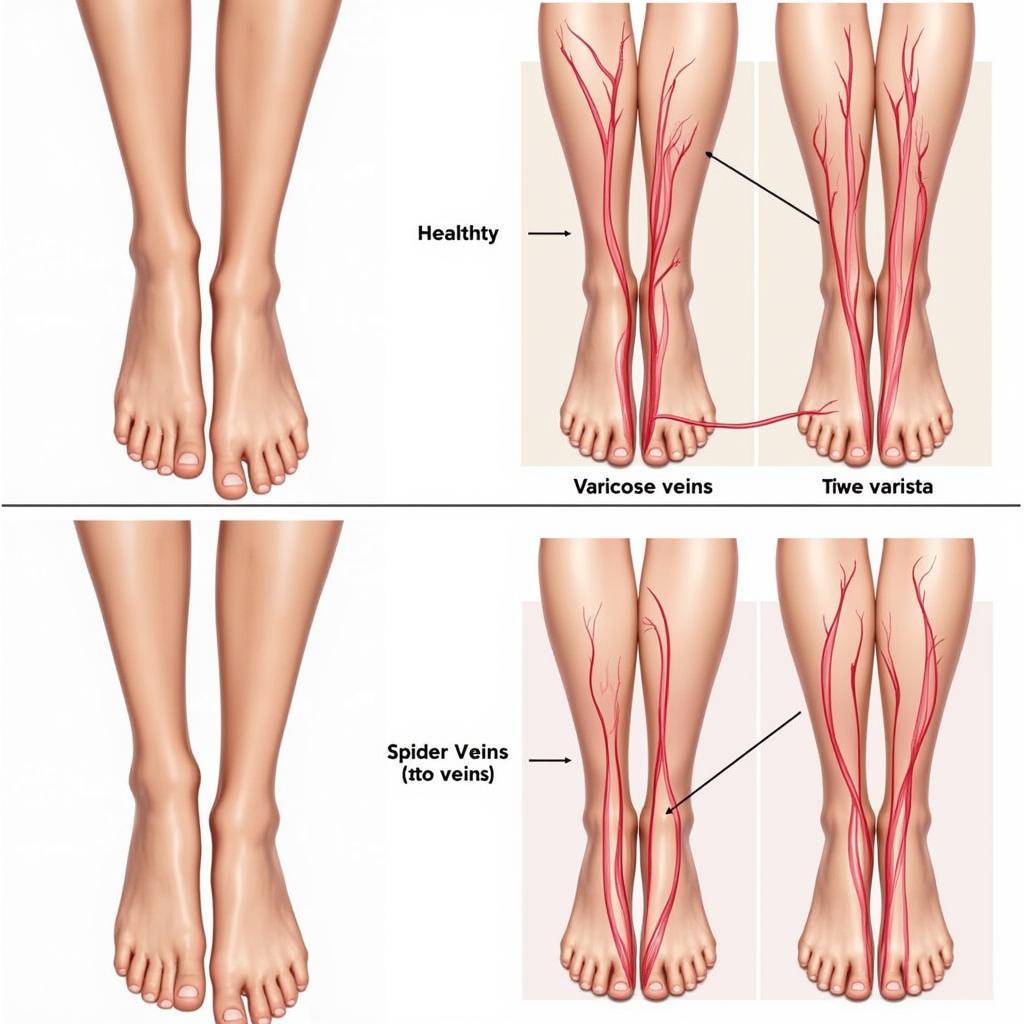Have you ever wondered, “what color are my veins?” We often perceive them as blue or purple, but the truth is a little more complex. This article delves into the science behind vein color, exploring the factors that influence their appearance and debunking common misconceptions.
Decoding the Mystery: Why Don’t Veins Appear Red?
Blood is red, thanks to the hemoglobin it contains. So, why aren’t our veins bright red like arterial blood? The answer lies in how light interacts with blood and our skin. When light penetrates the skin, it’s absorbed and reflected back. Red light penetrates deeper, while blue light is reflected back sooner. Because veins carry deoxygenated blood, which absorbs more red light, the blue light is reflected back, making veins appear blue or purple.
How Skin Tone Affects Vein Color
Skin tone plays a significant role in how we perceive vein color. Lighter skin tones allow for greater visibility of blue light reflection, making veins appear more prominent and blueish. In contrast, darker skin tones absorb more light across the spectrum, making veins appear less noticeable or even greenish in some cases. This is why finding the right foundation shade can be tricky, similar to picking the perfect lip color, as discussed on our page on how to pick the right lip color.
What Color Are My Veins? Factors Beyond the Basics
Beyond skin tone and light absorption, other factors influence vein appearance. Vein size and depth are key players. Superficial veins, closer to the skin’s surface, appear bluer, while deeper veins might appear less noticeable or even greenish due to the additional layers of tissue and fat.
Vein Health and Color Changes
Changes in vein color can sometimes indicate underlying health issues. For instance, varicose veins, which are swollen and twisted, can appear dark blue or purple. Inflamed veins might appear red. If you notice significant changes in your vein color, consult a medical professional.
What Do Different Vein Colors Mean?
While the perception of blue or purple is typical, variations exist. Greenish veins might be more common in individuals with olive or darker skin tones. Sometimes, veins can appear slightly reddish due to inflammation or increased blood flow. This can be related to understanding the complexities of hair color numbering systems, a topic we explore in what do numbers on hair color mean.
When to Seek Medical Advice about Vein Color
“What color are my veins” is a question that can lead to important health considerations. While most vein color variations are normal, sudden changes, especially accompanied by pain, swelling, or other symptoms, warrant medical attention.
“Vein color can offer clues about circulation and overall health. While blue or purple is typical, significant deviations or sudden changes merit professional evaluation,” advises Dr. Anya Sharma, a leading vascular specialist.
 Healthy vs. Unhealthy Vein Appearance
Healthy vs. Unhealthy Vein Appearance
Conclusion: Understanding the Nuances of Vein Color
So, what color are your veins? The answer isn’t simply blue or purple. It’s a fascinating interplay of light, skin tone, and vein characteristics. While the typical bluish-purple hue is common, variations exist and understanding them can empower you to observe your body and seek medical advice when necessary. Remember, observing your vein color is just one piece of the health puzzle.
FAQs about Vein Color
- Why do my veins look blue even though blood is red? This is due to the way light interacts with blood and skin. Deoxygenated blood absorbs red light, reflecting blue light back to the surface.
- Is it normal for my veins to look green sometimes? Yes, especially in individuals with darker or olive skin tones.
- Should I be worried if my veins suddenly change color? Sudden changes, especially accompanied by pain or swelling, warrant medical attention.
- Can vein color indicate health problems? Yes, certain conditions like varicose veins can alter vein color.
- Why are some people’s veins more visible than others? This is often due to skin tone and vein depth.
- Do veins change color with age? Veins can become more prominent with age due to thinning skin.
- Can lifestyle factors affect vein health and color? Yes, factors like diet, exercise, and prolonged standing can influence vein health.
Related Resources:
Need More Help with Colors?
For personalized color consultations or assistance with any color-related inquiries, contact us at: Phone: 0373298888, Email: [email protected] or visit us at 86 Cầu Giấy, Hanoi. Our 24/7 customer support team is here to assist you.
